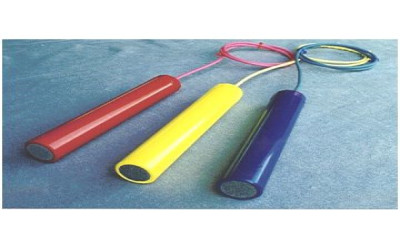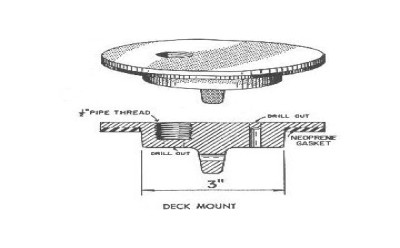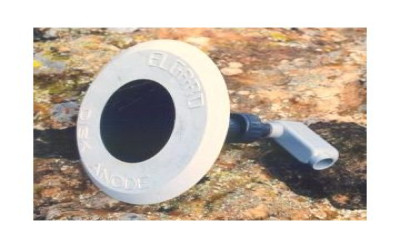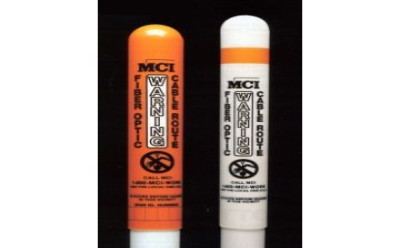Explore Related topics
Description
The Solid-State Decoupler (SSD) series continues the Dairyland tradition of offering innovative protection products to the corrosion prevention industry, while building off of proven solid-state technology developed by Dairyland. With a lightweight, non-metallic housing and lower cost, the SSD can be economically applied throughout a cathodically protected system. The SSD functions as a DC isolation and AC coupling device (a “decoupler”), preventing the flow of CP current up to a predetermined voltage threshold, while passing any induced AC current. For voltage that attempts to exceed the threshold, the device instantly switches to the shorted mode, providing over-voltage protection. When the event has passed, the device automatically switches back to the DC blocking mode. This operation can occur an unlimited number of times, and is typically due to AC faults and lightning, which the SSD is rated for. While the standard threshold is -2V/+2V, the SSD can be supplied with up to a -3V/+1V threshold and several lower threshold combinations. The threshold is the absolute, or peak, voltage at which switching occurs, and is the sum of the DC and peak AC voltage across the terminals of the device. This results in a very low, and safe, clamping voltage across the SSD terminals. Features & Characteristics Compact, lightweight package Range of AC Fault Ratings Higher Blocking Voltage than Polarization Cells UL and C-UL Listed for Grounding Electrical Equipment UL, C-UL Listed for Class I, Division 2 Locations Certified by UL/Demko for Meeting ATEX Directive for Zone 2; CE Marked Submersible Design Applications The SSD is designed for: Decoupling gradient control mats (grounding mats) from pipelines. Over-voltage protection of equipment from AC faults, lightning, and switching transients (e.g. insulated joints). Decoupling dissimilar metals that must otherwise be AC bonded for safety. AC grounding and DC isolation of electrical equipment integral to a cathodically protected system. Mitigation of induced AC voltage. With the introduction of the lower cost SSD, decoupling gradient control mats is now an affordable and attractive option. With a decoupled gradient control mat: (a) the potential of the mat material is irrelevant, (b) the mat can be made from less costly materials than pure zinc, (c) interaction between the mat and CP system is eliminated, and (d) decoupling allows CP readings can be taken on the pipeline in the vicinity of the mat. DEI also offers cost effective gradient control mats designed for worker safety from both power frequency and lightning / switching transients. Other "ground mat" designs do not address the requirements necessary to provide low touch and step potentials due to lightning and similar transients. Insulated joints often need over-voltage protection against lightning and AC fault current, and in some cases, steady-state induced AC voltage. Due to the small clearance between opposite sides of the insulated flange, a protective device must provide a low clamping voltage, including the voltage effects of the conductors or bus bars used to connect the product. DEI offers superior designs that address voltage clamping issues and also provide secure mounting methods that aid in limiting voltage to low levels. As an AC mitigation device, the SSD can also keep the steady-state voltage across the flange to a negligible level. In decoupling dissimilar metals, the SD can be used between two grounding systems, or other structures that require AC safety bonding while preventing galvanic corrosion. As grounding codes may apply, the SSD is listed by UL for meeting the requirements of an effective AC grounding path per U.S. and Canadian electric codes.SSD Basic Ratings Threshold Voltage (absolute)-2/+2V (standard)-Up to -3/+1V (optional) Lightning Surge Current100kA crest (4 x 10 µs waveform) for 5.0KA, 3.7KA and 2.0KA models75kA crest (4 x 10 µs waveform) for 1.2kA models AC Steady-State Current (amperes - rms) 50/60Hz45A (Standard) AC Fault Current (Amperes - rms) @ 50/60 Hz Cycles 1.2kA 2kA 3.7kA 5kA 131030 2,1001,6001,4001,200 5,3004,5003,7002,000 6,5005,0004,2003,700 8,8006,8005,7005,000 Environmental rating: IP68 Submersible to 2m depth Hazardous (classified) areas:Per NEC, CSA: Class I, Division 2, Groups A, B, C, DPer EN50021: Zone 2 Third-party listings and approvals:Underwriter’s Laboratories (UL)Underwriter’s Laboratories - Canada (C-UL)CE Mark Lightning Surge Current Rating The lightning surge current rating should not be confused with the AC fault current rating. Lightning has a very different waveform, with a faster rise time, a shorter duration, and much less energy than an AC current waveform of the same peak current. Lightning current ratings are established by subjecting the over-voltage protective device to representative lightning current in a high power test laboratory. The waveforms most commonly used are the 8 x 20 microsecond waveform and the 4 x 10 microsecond waveform. The first number represents the time it takes the lightning surge to reach its crest value and the second number represents the time it takes for the current to decrease to 1/2 its crest value. The SSD was tested with a 4x10 waveform. Lightning Ratings Model Rating 5.0 kA3.7 kA2.0 kA1.2 kA 100 kA crest100 kA crest100 kA crest75 kA crest Model Number Description Chart








